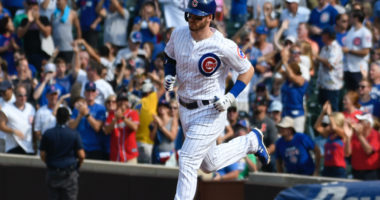When Will MLB Return, And Assuming It Does, What Will It Look Like?


Major League Baseball and the MLB Baseball Players Association have reached agreements to start the year on July 4th. However, there are several obstacles that need to be addressed and details that need to be finalized for this to occur.
One potential silver lining is that the standoff between MLB and MLBPA may be the main factor preventing the return of baseball this year, as even the most cautious states are beginning to cautiously reopen in June.
Governor Gavin Newsom of California announced that professional sports can resume in early June under strict modifications and without audiences. He also suggested that other sectors of the economy may reopen if positive trends continue in the coming weeks.
In a recent statement, Illinois Governor J.B. Pritzker expressed similar sentiments.
MLB did return when?
The initial talks have started on a challenging tone, as MLB owners are pushing for a 50-50 revenue split with players and adjusting salaries for the shortened 82-game season. While players have accepted the salary adjustment, the revenue split remains a contentious issue. Notably, players such as Blake Snell and Bryce Harper have publicly voiced their opposition to this proposal.
Both parties have strong motivation to come to an agreement, and there is ample time to do so. According to Patrick Rishe, director of the sports business program at Washington University in St. Louis, Major League Baseball (MLB) is currently losing an estimated $75 million per day without any games. If baseball is the first sport to resume, it could see a surge in popularity, higher TV ratings, and increased betting due to the demand for live events during the pandemic. Despite recent challenges, there is an opportunity for MLB to regain its popularity and reach a new audience if it resumes play.
However, there are numerous health and logistical considerations that must be taken into account, in addition to the financial aspect. ESPN reports that in order to resume play, 200,000 reliable COVID-19 tests would be required, along with a commitment to not interfere with the country’s pandemic control efforts. Only four of the 17 states with MLB teams currently meet the testing criteria outlined by The Harvard Global Health Institute, which suggests administering at least 152 tests per 100,000 residents. Thus, this issue remains unresolved.
Seasonal changes
If MLB manages to overcome all the challenges, the regular season would see the following changes:
Games will take place in vacant home stadiums known as Teams & Rsquo.
During the winter season, a total of 82 games could be played.
There would be seven teams in each playoff group.
There may be a squad of 20 men for cars and active rosters of 30 men.
A comprehensive Dd would be included.
Chicago postseason sports
What impact would the aforementioned changes have on Chicago’s teams if baseball were to resume?
The Cubs and White Sox are well-suited for the expanded postseason format. In January, the White Sox were projected to win 80.5 games and the Cubs were projected to win 88.5 games according to PointsBet. While the shortened season will impact these projections, in a normal year, both teams would have been on track to secure playoff berths. Therefore, it is possible that one or both teams could benefit from the expanded playoff field.
On the other hand, the Cubs have the option to use a designated hitter (DH) in every game, which could result in increased opportunities for players like Ian Happ and Kyle Schwarber to bat, potentially limiting their time playing in the outfield.
With that said, it is difficult to fully assess the importance of the changed rules as the main emphasis is still on the ball being returned in some manner. We will closely monitor the conversations between MLB and the MLBPA this week.






